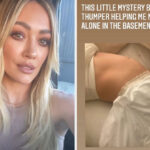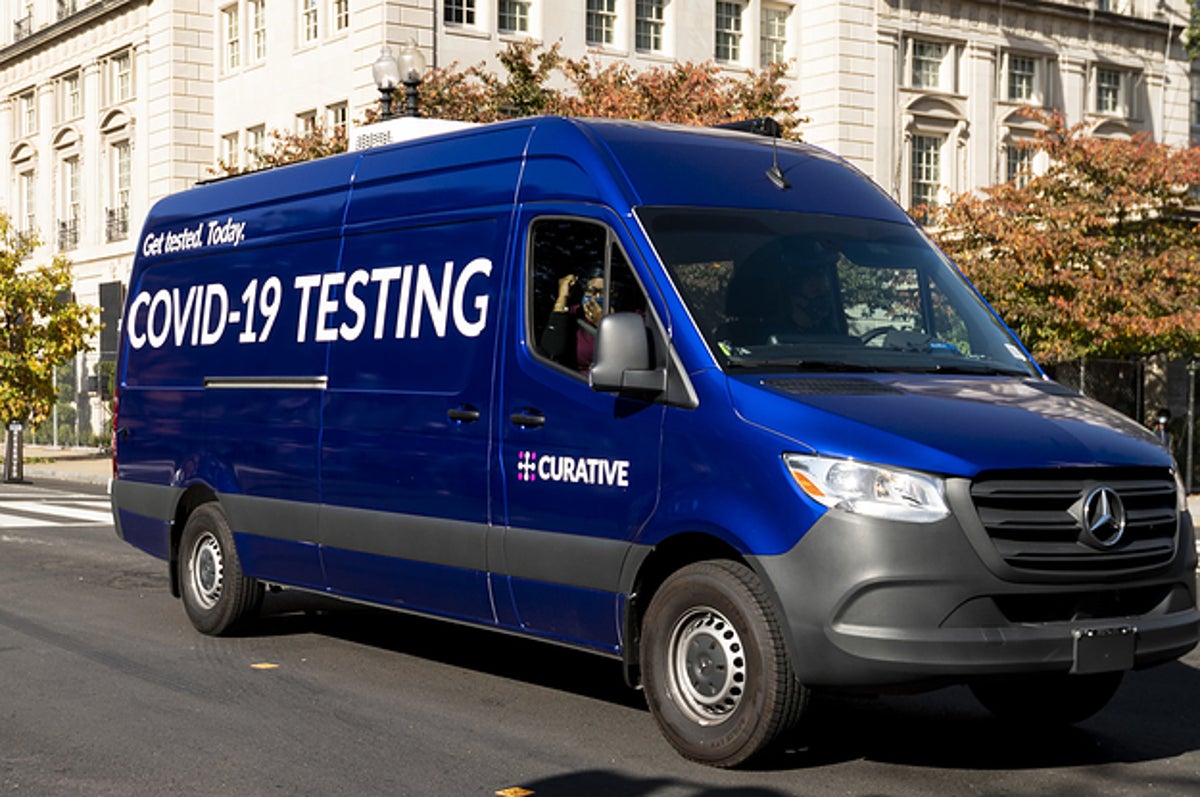
[ad_1]
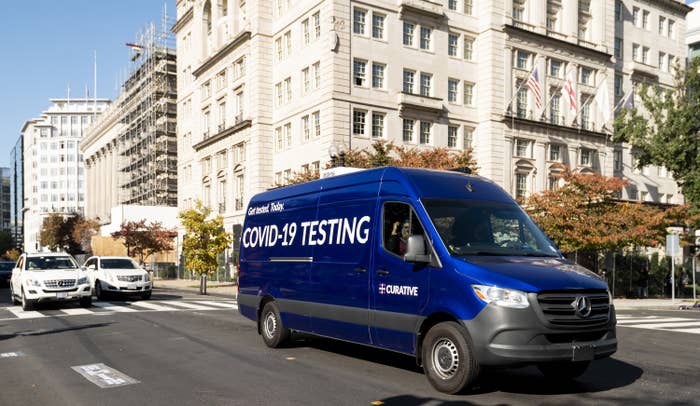
Bill Clark / CQ-Roll Call, Inc via Getty Imag
Nearly a year into the US pandemic, the massive startup Curative is embroiled in an ongoing argument with federal regulators: Is it worth having tests that may accurately detect COVID-19 in the early stages of infection, but not as time goes on?
That debate came to a head this month when the Food and Drug Administration warned the public that the Southern California company’s tests were possibly missing coronavirus infections. This week, Curative pushed back with new data that, it claims, validates its approach.
Research done by Curative suggests that its mouth-swab test spots the virus with a high degree of accuracy in the first three weeks of an infection, including in people without symptoms, and with less accuracy for later-stage infections. That drop-off in ability is relatively unimportant during the pandemic, Curative argues, underscoring a philosophical split in testing.
The young company, and scientists who side with it, say it is most crucial to focus on catching people who are at their potentially most contagious, even if it means using a less sensitive test that may fail to pick up on people who are no longer infectious but who have lingering remnants of the virus.
Michael Mina, an epidemiologist at the Harvard T.H. Chan School of Public Health who is not involved with Curative, said the FDA appeared to be holding Curative to a nearly impossible standard of sensitivity, based on documents provided by the company. “The FDA and its deadly regulations around how they are evaluating Covid tests is inadvertently resulting in the loss of thousands of additional lives that need not be lost in this pandemic,” he said by email. “Their decision making on Curative is one example.”
Other experts are more cautious, saying that in at least some circumstances, high precision is important because even a relatively few undetected cases can be a compounding threat and lead to outbreaks. Some also raised concerns that Curative in particular has more work to do to prove it can be trusted to test at the widespread scale at which it’s currently operating: 1 million tests a week, or 10% of all COVID-19 testing in the US.
The tussle between the FDA and Curative illustrates the tightrope that the regulator is trying to walk: making brand-new tests quickly and widely available during a pandemic while ensuring they are reliable.

Ringo H.W. Chiu / AP
Motorists queue up to take a coronavirus test in a parking lot at Dodger Stadium in Los Angeles, a site that used tests produced by Curative.
Since it was founded in January 2020, the Southern California startup has rocketed to becoming one of the biggest COVID-19 test providers in the country. It performs PCR tests, the most widely used kind of diagnostic test, which detect the virus’s genetic material. What sets Curative apart is the type of sample it collects: spit swabbed from the tongue, cheek, and mouth — not the dreaded nasopharyngeal “brain swab” that goes far up the nose. While it offers other types of tests too, the saliva test is by far the most popular, making up 90% of the 13 million tests Curative has administered.
It’s also the most controversial. In April, the FDA authorized those tests with the caveat that they were only to be used on people who showed COVID symptoms within the prior two weeks. Data from Curative at the time showed that the tests caught zero of three cases in people who were not outwardly sick.
Yet as the number of Curative sites has ballooned to more than 10,000, the tests have been widely offered to people without symptoms. Eric Garcetti, the mayor of the city of Los Angeles, has openly credited it with diagnosing tens of thousands of asymptomatic residents.
As of earlier this month, Curative’s customers included the states of Texas, Florida, Delaware, New Mexico, Wyoming, and Colorado; the California counties of Marin, Los Angeles, and Riverside; the cities of Los Angeles, Milwaukee, Chicago, and Alexandria, Virginia; the hotel chain La Quinta; the Department of Defense; and Congress.
Then on Jan. 4, the FDA sent out a vague warning about “the risk of false results, particularly false negative results” from Curative. It restated that its oral tests should only be given to people with symptoms and that any negative results from those tests should be double-checked. It also reminded the public that, under the terms of the authorization, test subjects must be supervised by healthcare workers. Some people in Los Angeles told BuzzFeed News that they were not aware of anyone monitoring them when they self-administered their tests.
The warning set off alarm bells in some cities where it was the main test being offered, most notably in LA, which was in the midst of a surge in COVID-19 cases and deaths. Afterward, Los Angeles County and the state of Colorado announced that they would drop Curative, and the Department of Health and Human Services said it would explore alternative testing options for members of Congress. But other cities and states are sticking with it, with some arguing that every test carries a risk of incorrect results and that imperfect testing is better than no testing.
In response to criticism that its tests are being used outside of the scope of their authorization, Curative has deflected responsibility, saying that it does not directly decide who is eligible for testing.
Meanwhile, the company has been pushing the FDA to expand its authorization to let it test asymptomatic people. It says its new data shows that it can reliably identify the biggest contributors to the spread of the virus, regardless of whether they are outwardly sick.
“If you’re screening for a return to work and you’re picking up everyone who had COVID two months ago, no one’s going to return to work,” CEO Fred Turner told BuzzFeed News. “If you want to detect active COVID, what the ‘early’ study shows is that Curative is highly effective at doing that.”
The company submitted new data to that effect in December, setting off a chain of correspondence that led to the FDA warning, according to documents reviewed by BuzzFeed News. Curative had initially declined to release that data but is sharing some of it now, along with two additional studies that it conducted this month in an effort to allay the FDA’s original concerns. Summaries of the data have been posted online but not published in a peer-reviewed journal.
It’s still unclear why the FDA sent out its warning after receiving Curative’s data in December or what it thinks of Curative’s argument about testing sensitivity. On Wednesday, FDA spokesperson Audra Harrison said the agency is reviewing Curative’s data “as expeditiously as possible.” She declined to comment on the ongoing review.
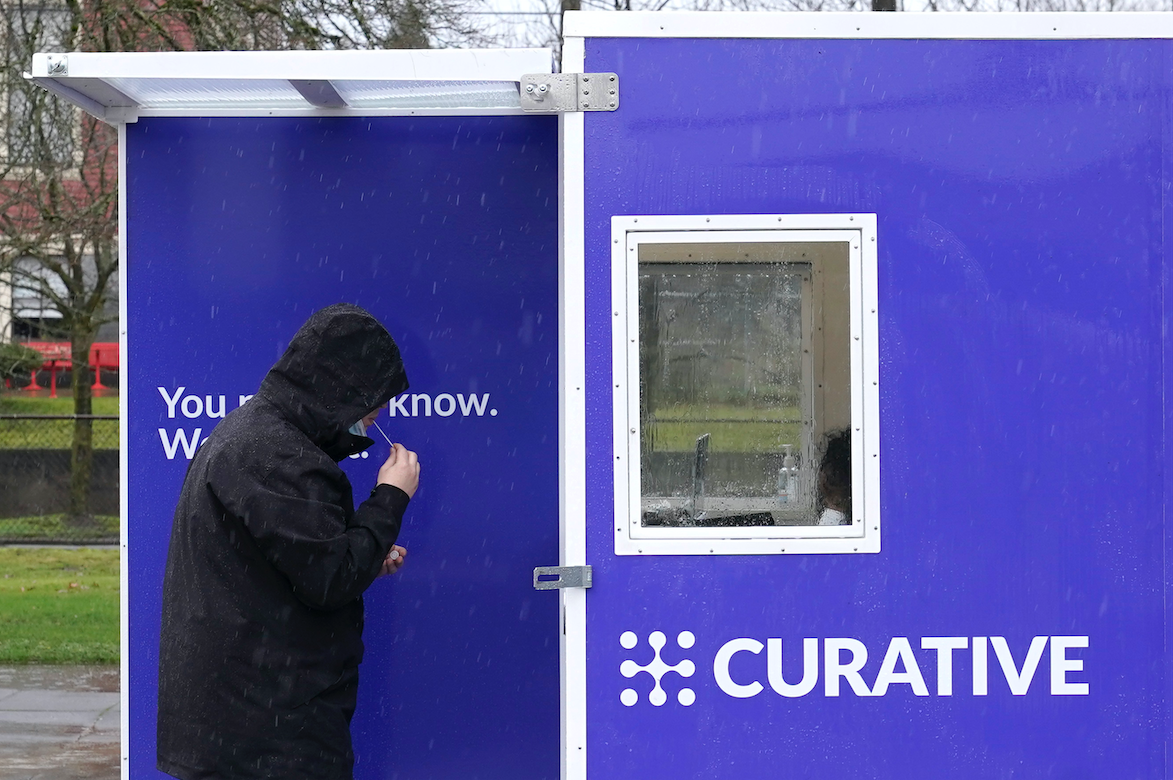
Ted S. Warren / AP
In the summer and fall of 2020, Curative ran its study on more than 1,300 people, both symptomatic and asymptomatic, who visited drive-through testing sites in Los Angeles and San Antonio, Texas. They were given written and video instructions on swabbing their mouths, and also had a healthcare worker swab their nasopharynx — the back-of-the-nose area that is considered the source of “gold standard” samples in testing.
Curative used a competitor’s nasopharyngeal test as the benchmark in its experiment. To figure out whether a given sample was truly infected or not, it ran PCR tests — a series of temperature-change cycles to amplify any genetic material from the virus that it may have contained. (Generally, the fewer cycles required to detect the virus, the greater the sample’s viral load. The more cycles required, the smaller the load.) If the virus was detected in someone’s sample within 35 cycles, Curative considered that person to be positive, and then checked if its own test got the same answer or not.
The results were promising. As Curative told the FDA on Dec. 9, its oral tests accurately identified approximately 9 out of 10 positive cases, including asymptomatic ones.
But the FDA appeared to raise concerns that Curative was clearing a bar that it had set too low — one that was “not appropriate and arbitrary,” according to letters later sent by the company. (It declined to release the agency’s side of the correspondence.) In Curative’s understanding, the regulator thought samples should count as COVID-positive if the virus was detected within 45 temperature-change cycles, rather than 35. That widened the pool of positive samples to include those with lighter viral loads.
Challenged to root out this larger number of infected people, the startup did not do as well: The FDA’s analysis found that its oral tests detected 72% of positive cases. The apparent concern, according to documents, was that Curative was missing a number of infections and incorrectly giving a clean bill of health to some patients.
Some scientists think the FDA was holding Curative to an unreasonably high standard. Studies have shown that people can retain detectable bits of the virus’s genetic material in their nasopharynx for weeks after they are infectious or have symptoms.
Using a 45-cycle threshold as the benchmark is “absolutely insane,” said Mina of Harvard by email. It “is like looking for a single molecule of RNA on a swab,” he said, whereas “when people are sick and are contagious, they literally can have 1,000,000,000,000x that number.”
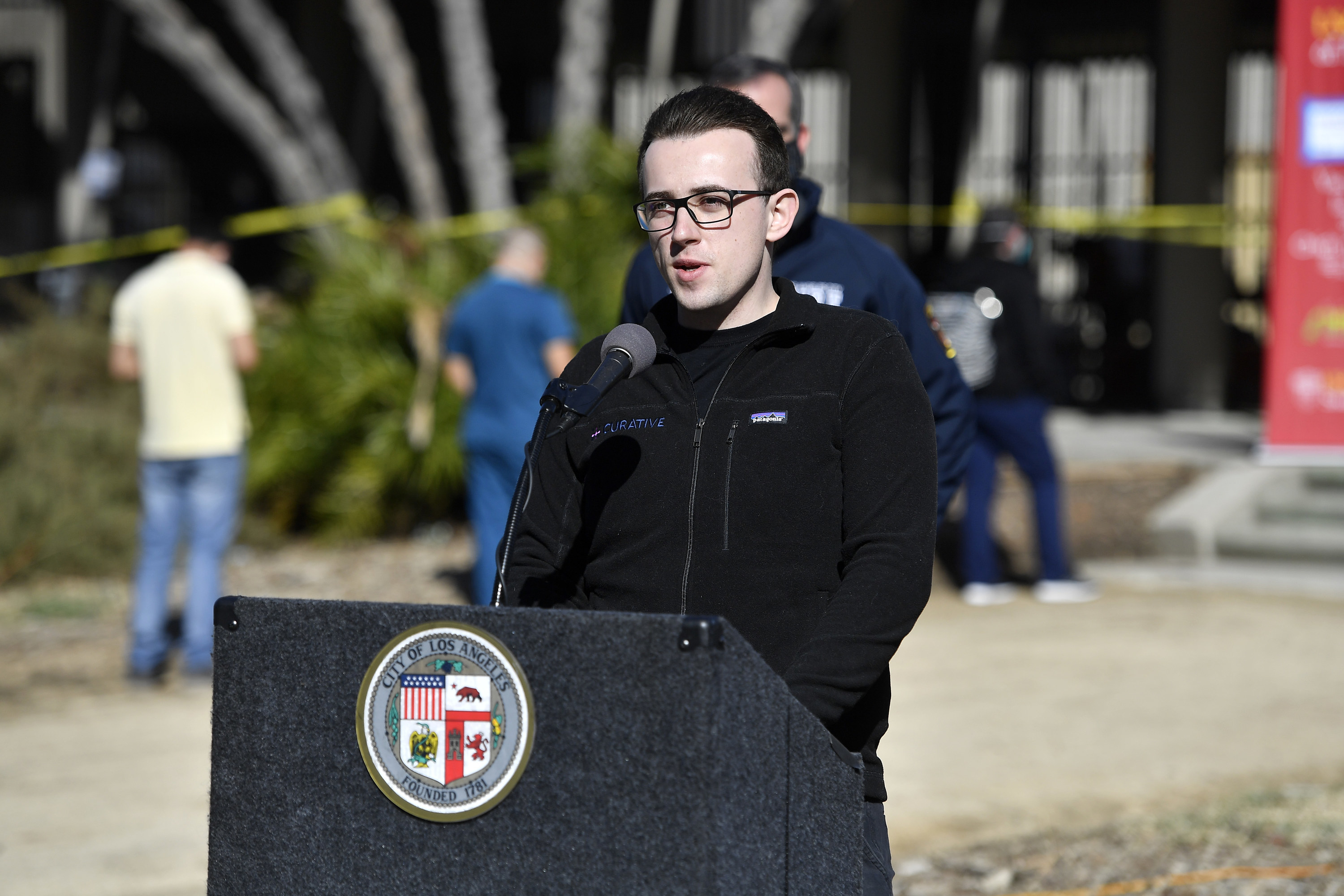
Frazer Harrison / Getty Images
Curative CEO Fred Turner
The test used as a comparator is so sensitive that “it would potentially detect someone 35 days post-infection who is fully recovered and cause that person to have to enter isolation,” he added. “That’s crazy and it’s not science-based, it’s not medicine-based, and it’s not public health-oriented.”
Susan Butler-Wu, an associate professor of clinical pathology at the University of Southern California’s Keck School of Medicine, said “there is no magic number” for determining infectivity and that a higher number of cycles can be appropriate in some circumstances.
Working in a hospital lab, she makes a point of gathering nasopharyngeal samples from possibly sick patients and testing out to 45 cycles. “I want to make sure I don’t miss them,” she said. She also noted that a sample with viral material that gets detected beyond 35 cycles does not automatically mean that someone is at the tail end of an infection, but is possibly at the very beginning of one, when the virus is just taking root.
Determining the “correct” number of cycles comes down to what the test is being used for, she said. If a public health agency’s goal is to test as many people as possible, that may require a different degree of precision than a hospital focused on screening patients.
“Are you doing asymptomatic screening just to see if I’m infectious, or are you sick and we’re trying to make a diagnosis?” Butler-Wu said. “Those are two different questions.”
In response to the FDA’s criticism, Curative ran more studies to explore its theory that it was not missing active infections, but rather infections that were no longer a public health threat.
This time the guinea pigs were its own employees, all supervised by on-site workers. In a set of about 60 people who’d separately tested positive for COVID-19 in the last three weeks — and were therefore likely actively infectious — the oral test picked up 100% of the cases, including all of the asymptomatic subjects.
It was a much different story in people who’d tested positive in the last three to eight weeks and who had mostly experienced symptoms at some point. Curative’s oral test picked up just one of these 22 cases. Nasopharyngeal tests did a better job of detecting infections in this later-stage group.
But the company questions whether having that high degree of sensitivity is meaningful in combating the pandemic. It was these kinds of late-stage cases, it argued to the FDA, that primarily made up the so-called “false negative” results in the agency’s analysis of the previous study.
Anne Wyllie, an epidemiologist at Yale School of Public Health who helped develop a separate coronavirus saliva test that is authorized by the FDA, said Curative’s research could help explain some of the discrepancies that have been seen between studies evaluating saliva and nasopharyngeal swabs.
But some scientists wanted to see more data before siding with Curative.
Alex Greninger, a pathologist at the University of Washington, said the latest studies in employees with early- and late-stage COVID would have benefited from identifying the amount of virus in each sample. If a sample’s viral load was extremely high, for example, Curative would have ostensibly had an easier time getting the correct answer. “You want to know if they just got softballs,” he said. But the outside test that Curative used as a benchmark was not capable of producing that granular information.
Turner said the test in question met FDA recommendations. He said the company’s research indicates that in oral fluid, unlike with nasopharyngeal samples, there is not a correlation between viral load and infectiousness, so the amount of viral load per sample is less important to track.
With the new data in hand, Curative has asked the FDA to allow its test to be given to people who don’t have symptoms. People who test negative more than three weeks after having symptoms would be cautioned to cross-check their results.
But Greninger expressed concern that Curative has already been testing lots of asymptomatic people for months in the middle of a pandemic.
“What’s concerning about the Curative situation is that the scale has gotten so large, it’s being used so much off-label,” or outside its authorized terms, he said.
Curative can do this because it’s set up to not be directly responsible for prescribing decisions.
When someone registers for a test, a doctor — who is not a Curative employee, but a public health agency employee or a telemedicine physician — reviews their medical history, Turner said. If someone doesn’t have symptoms, the decision of whether they can get tested is up to that doctor.
“What physicians do and the practice of medicine is a separate issue from what FDA does and doesn’t authorize,” the CEO said. “Physicians can write a prescription for a product based on their medical judgment.”
“Curative doesn’t dictate medical policy,” he added.
CORRECTION
This story has been updated with to reflect Susan Butler-Wu’s correct title.
[ad_2]
Source link
